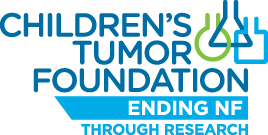The second session of the 2017 NF Conference, chaired by Dr. Ludwine Messiaen and Dr. Miriam Smith, focused on the associations between the complex physical manifestations of NF and the diverse genetic variations observed in NF patients. Understanding these ‘genotype-phenotype correlations’ is important for better management of NF and can potentially also pave the way for targeted therapeutic interventions.
CTF has previously identified that studying the correlation between gene modification (genotype) and the way NF manifests itself in patients (phenotype) was a vital need, and therefore worthy of investment. If genotype-phenotype correlations are identified, that information can guide clinical care, and better help patients and parents understand what to potentially expect. In other words, it will make NF a little more predictable and may even allow in certain cases, gene therapies. The Children’s Tumor Foundation is investing in the largest diagnostic lab for NF in the country led by Dr. Ludwine Messiaen, in order to increase our understanding of these correlations.
Dr. Magdalena Koczkowska, a postdoc in Dr. Messiaen’s lab reported at the NF Conference their findings on missense mutations in NF1 codons 844-848, and their associated phenotypes. Patients harboring missense mutations in this region had significantly higher number of externally visible plexiform neurofibromas, optic pathway gliomas, and bone abnormalities, thus demonstrating that NF1 missense mutations outside of the GAP-related domain may not always have a mild phenotype, as is largely believed.
There was also a perspectives talk by Dr. Bruce Korf, who highlighted the different classes of NF1 mutations and discussed the new techniques being developed in the UAB laboratories of Drs. Kesterson and Wallis to target specific mutation classes. The Korf group has developed model systems for NF1 nonsense mutations, which result in prematurely truncated inactive NF1 protein, and is testing specific drug types that could suppress these mutations. Other techniques being tested include short nucleotide sequences to rectify splicing mutations and compounds that can possibly correct the effects of missense mutations.
Dr. Laura Papi gave an overview of results, both published and unpublished, obtained through genetic testing in schwannomatosis and how it contributes to the understanding of the genetics and genomics of the disease. She also discussed the clinical phenotypes associated with mutations in SMARCB1 and LZTR1, two genes currently implicated in schwannomatosis, and compared them with schwannomatosis phenotypes due to unknown genetic defects.
Microdeletions encompassing the NF1 gene and its flanking regions are the most frequent recurring mutations in NF1, responsible for about 5% of all cases. In her presentation, Dr. Hildegard Kehrer-Sawatzki summarized the current knowledge about the mechanisms underlying NF1 microdeletions, as well as the associated genotype- phenotype correlations. Patients with NF1 microdeletions have more frequently physical anomalies, such as overgrown limbs and tall-for-age stature, dysmorphic facial features, delayed cognitive development, cardiovascular anomalies. These patients also often exhibit a higher tumor burden (including increased numbers of subcutaneous, plexiform and spinal neurofibromas), than the general NF1 population. The effect of co-deleted genes on NF1 phenotype is not fully understood but is an important area of further study and of great significance for NF1 therapy.

